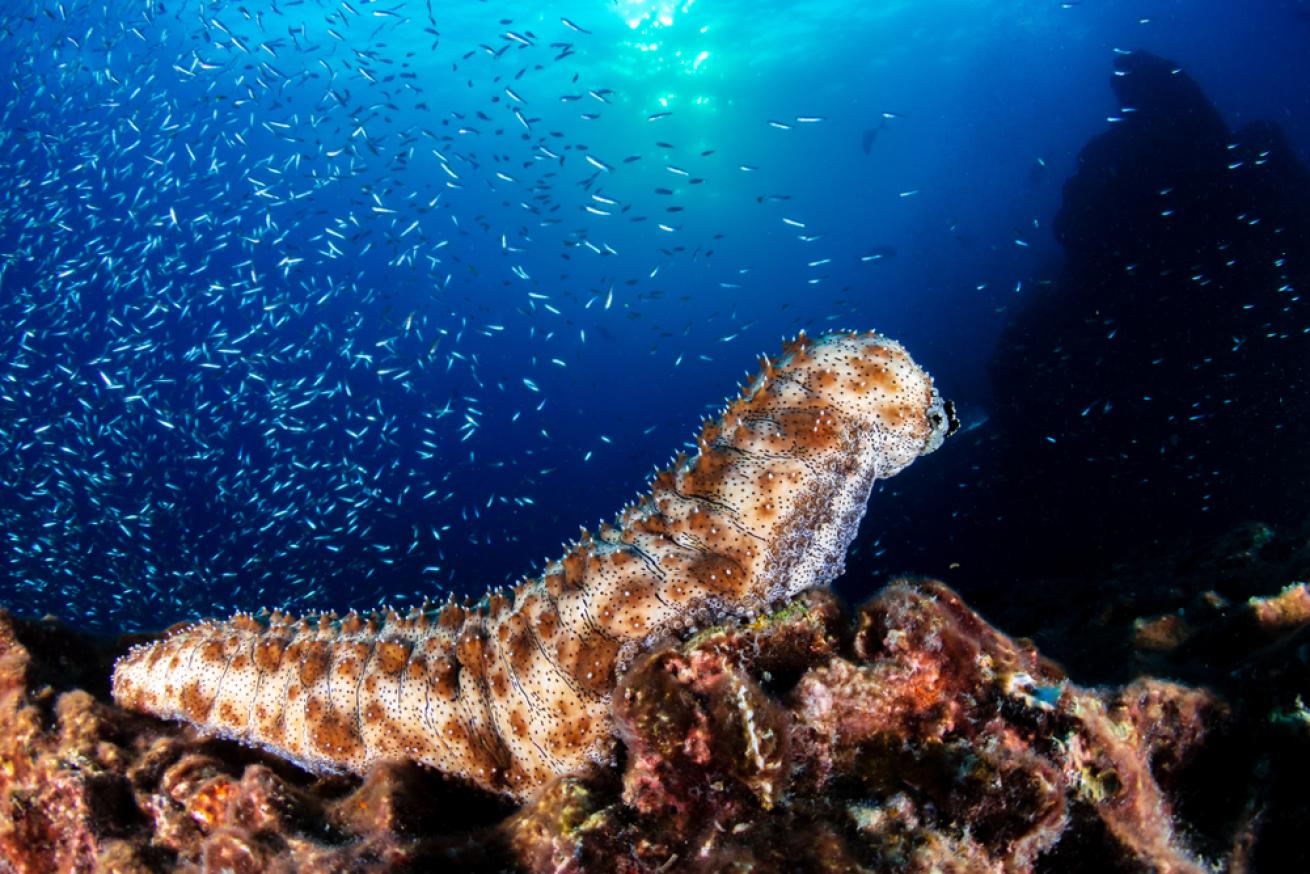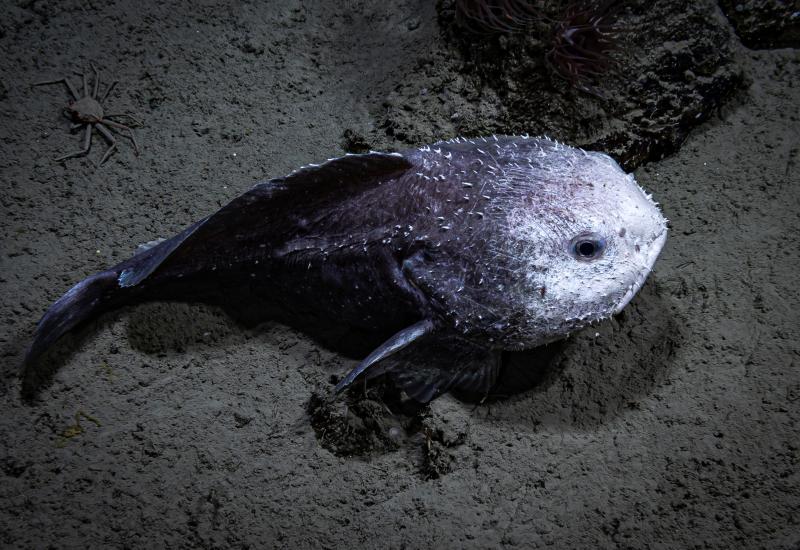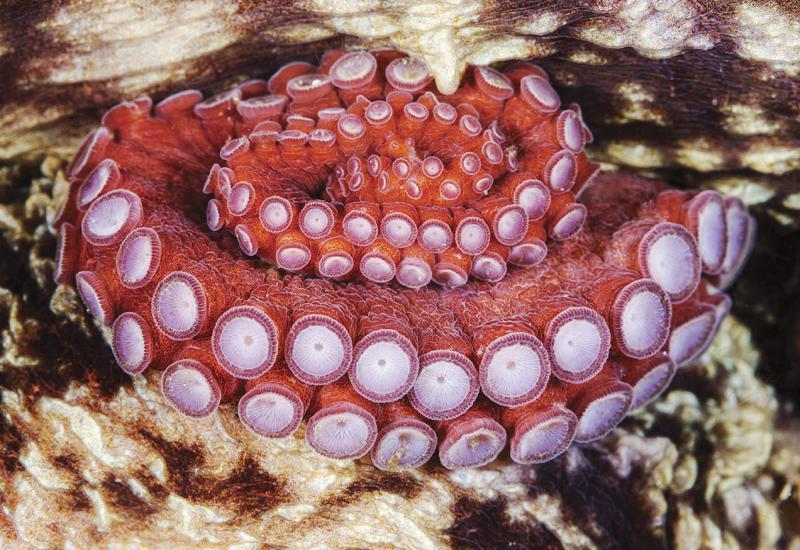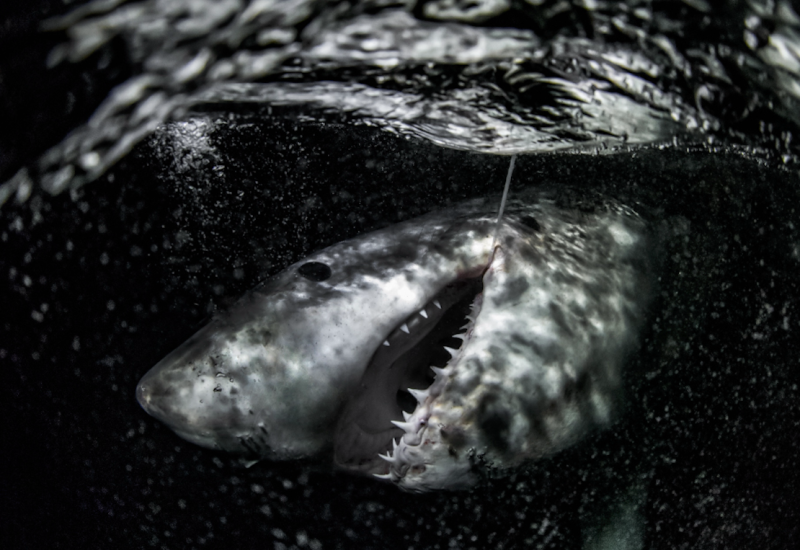Sea Cucumbers: Everything There Is to Know

Shutterstock.com/Richard WhitcombeLarge sea cucumber on a coral reef in Thailand.
“What’s the deal with sea cucumbers?” —Titus S.
Answer: It is incredibly challenging to study sea cucumber movement because they can remove any tracker or telemetry tag—no matter where it’s placed on their bodies. They simply extrude it right through their skin. Handy for them. Frustrating for us. Even with that obstacle, we still know quite a bit.
Despite the vegetal name, sea cucumbers are tube-shaped marine invertebrates that (usually) live on the seafloor. Like sea urchins and stars, these creatures are part of the Echinodermata phylum. That means they have spiny skin and move using biological hydraulics known as a water vascular system. There are over 1,000 known species of sea cucumbers, with the smallest being less than an inch long and the largest about the length of an adult human!
Related Reading: Divers Cull the Tide of Urchins to Help Save Kelp
Where do sea cucumbers live?
From shallow coastal waters to the deep sea, these animals live basically anywhere there’s ocean. While most stick to crawling along the seafloor, some deep-sea cucumbers—like Enypniastes eximia, commonly known as the “headless chicken monster”—can swim. The larvae of most species have a planktonic phase where they drift along with the water currents.
What do sea cucumbers eat?
Many sea cucumbers are scavengers that eat detritus and waste off the seafloor, but some can filter-feed plankton or scrape algae off rocks.
What are the threats to sea cucumbers?
Overfishing is one of the biggest threats to sea cucumbers right now. Humans eat some species, while others are dried and ground into traditional medicines. Because of this, some species have declined by up to 90% in population, resulting in three types getting added to the Convention on International Trade in Endangered Species in 2019.
Related Reading: How Scuba Divers Are Helping to Save the Critically Endangered Angel Shark
Strange, Butt True
I’m told this is a family publication, but when an animal has multiple fun facts about their butt, you have to share this information. So, without further ado:
Sea cucumbers breathe through their butts using gill-like structures called respiratory trees.
When threatened by a predator, some species can eject their internal organs out of their butts. The organs regenerate once the sea cucumber escapes.
Certain species have pearlfish that live in their butts. Some pearlfish just live there while other species actually eat some of the sea cucumbers’ internal organs. Yikes.
It is incredibly challenging to study sea cucumber movement because they can remove any kind of tracker or telemetry tag, no matter where it’s placed on their bodies. They simply extrude it right through their skin.
Ask a Marine Biologist is a monthly column where Dr. David Shiffman answers your questions about the underwater world. Topics are chosen from reader-submitted queries as well as data from common internet searches. If you have a question you’d like answered in a future Ask a Marine Biologist column, or if you have a question about the answer given in this column, email Shiffman at [email protected] with subject line “Ask a marine biologist.”

Courtesy David ShiffmanImage of David Shiffman
Dr. David Shiffman is a marine conservation biologist specializing in the ecology and conservation of sharks. An award-winning public science educator, David has spoken to thousands of people around the world about marine biology and conservation and has bylines with the Washington Post, Scientific American, New Scientist, Gizmodo and more. Follow him on @WhySharksMatter on Twitter, Facebook and Instagram, where he’s always happy to answer any questions about sharks.
The views expressed in this article are those of David Shiffman, and not necessarily the views Scuba Diving magazine.










